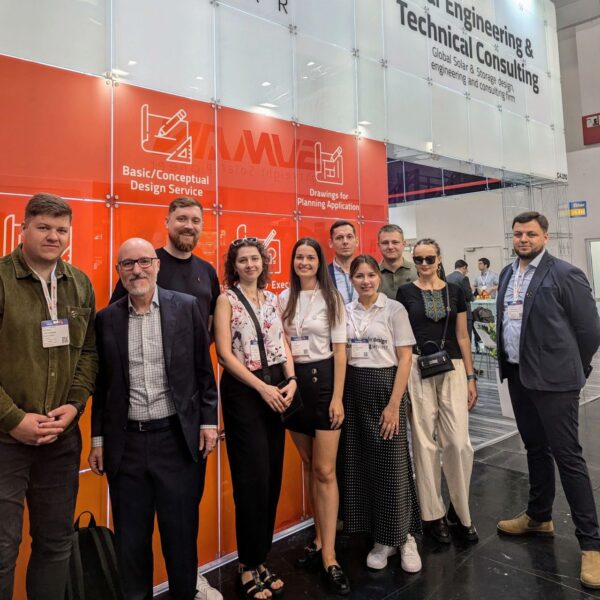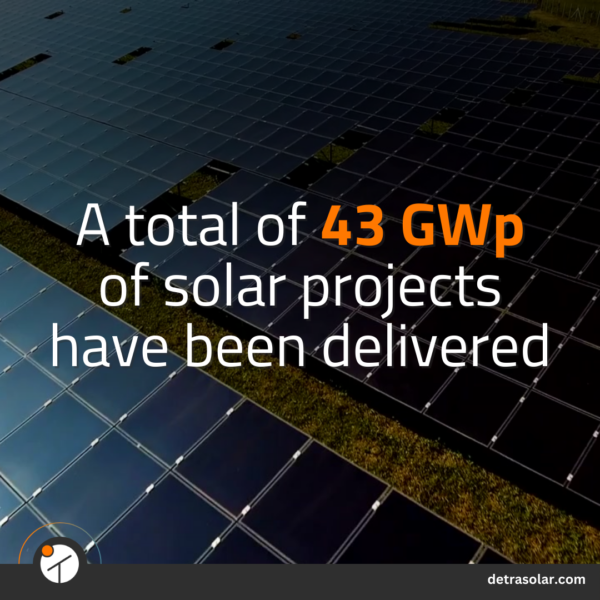Case Study: Elektrum 65 MW Salcininkai Solar Park
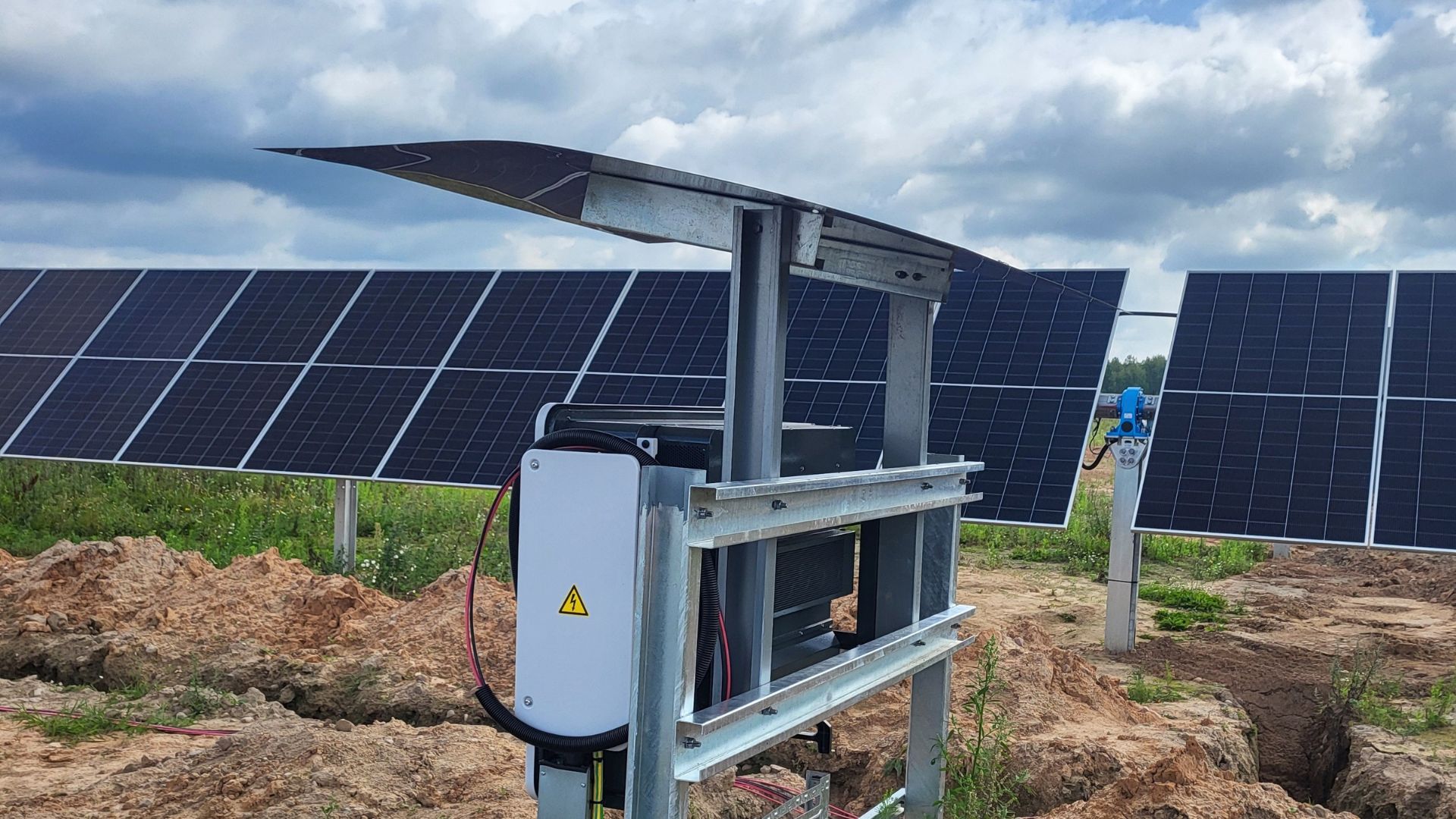
Elektrum Lietuva continues to strengthen its renewable energy portfolio in Lithuania with the development of the Salcininkai Solar Park. With a DC capacity of 65 MWp and a maximum AC export capacity of 50 MW, the project highlights the company’s ambition to deliver large-scale, high-performance clean energy projects.
The design features Trina Solar bifacial modules installed on Trina Solar tracker systems, combined with Sungrow SG350HX inverters and MV stations. A newly completed 30/110 kV substation ensures efficient and reliable grid integration.
The Salcininkai Solar Park represents a long-term investment in Lithuania’s clean energy future, combining modern tracker technology and high-efficiency components to maximise energy yield and grid performance.
Client
Elektrum Lietuva – A leading developer in solar, wind, and residential renewable energy projects, as well as electric vehicle charging solutions for individuals and businesses.
Project Location
Salcininkai, Lithuania
Key Deliverables
Detra Solar provided a comprehensive set of deliverables to ensure the efficient construction of the Salcininkai Solar Park, including:
- PV Layout: Overall layout optimizations for tracker PV system within the provided boundary.
- Ramming plan: Preparation of module structure coordinates, pile length lists with leading PV software – PVcase
- Fence and Road Layout: Design and placement of fencing and roads around the site.
- Trench Layout: Design of trenches for cabling management on site.
- Stringing Layout: PV String design and labeling system on a string level.
- DC Cabling Layout: DC cables distribution on site.
- AC Cabling Layout: LV cables distribution on site (inverter/MV station level).
- SLD: Electrical schematic of the entire solar PV Plant.
- Various Elevation Drawings: Detailed side views of transformer stations, O&M buildings, inverter mounting details.
- String’s MPPT Schedule: detailed string connection plan for each inverter to maximize performance.
- PVsyst Report: Simulation and analysis of the PV system’s energy yield while accurately evaluating various shading on site.
- BOM: Comprehensive list of equipment and quantities required for construction.
- Cable Schedule: DC, LV AC and LV MV cable sizing with detailed voltage and power loss calculations.
- Equipment Comparison: Evaluation of different equipment (modules, inverters) to determine the most suitable technology for the project.
Main Challenges
Tracker Cabling Solutions
The tracker system did not include dedicated cable routing channels, requiring a tailored approach to cable management. Cables were routed above dampers and motors to ensure safe installation, maintain operational reliability, and avoid shading impact on system performance.
Complex Terrain & Piling
Over 50 piles of varying sizes were installed across uneven ground, with additional concreting beyond manufacturer specifications to guarantee stability and long-term durability.
Substation & Grid Connection
The connection of the high-voltage transmission tower was one of the project’s most complex aspects, requiring alignment with strict national grid regulations. This demanded flexibility in planning and execution to ensure a successful outcome.
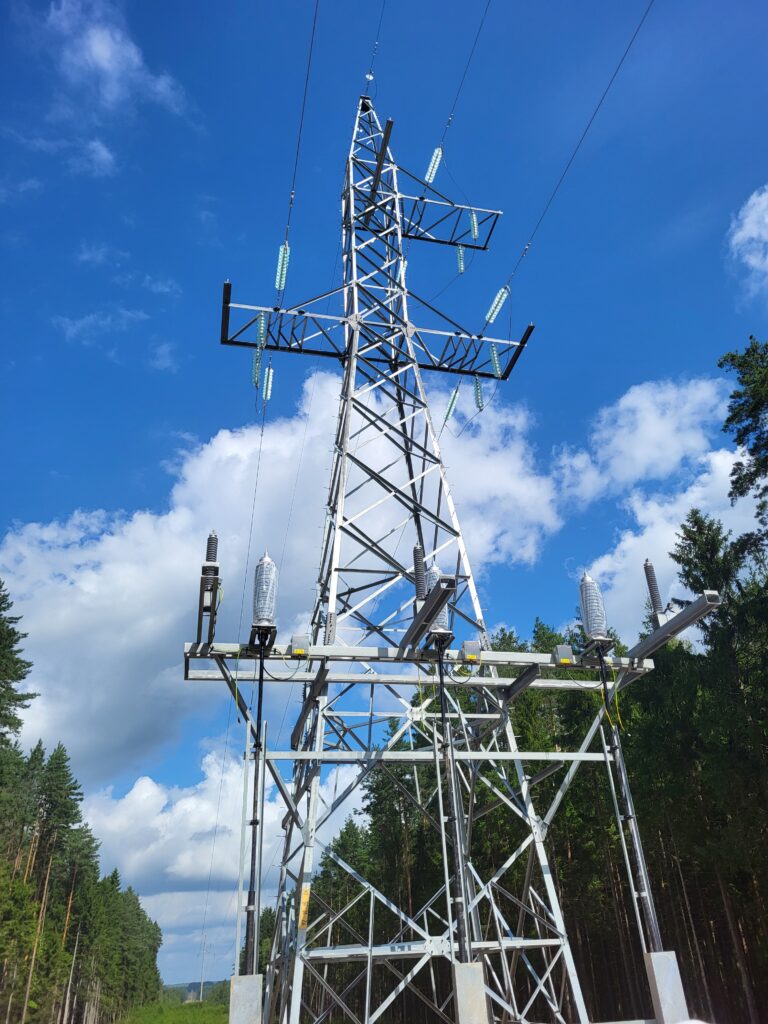
New HV transmission tower
Design Optimization and Technical Adaptability
- AI-Based Tracking: The TrinaTracker Smart Controller with SuperTrack AI reduces row-to-row shading and adapts to site conditions to maximize yield.
- Cabling Protection: Metal covers safeguard cables around tracker structures and inverters, preventing damage from vegetation management.
- Structural Flexibility: Spherical bearings ensure smooth operation on uneven terrain, while dampers mitigate the effects of weather anomalies.
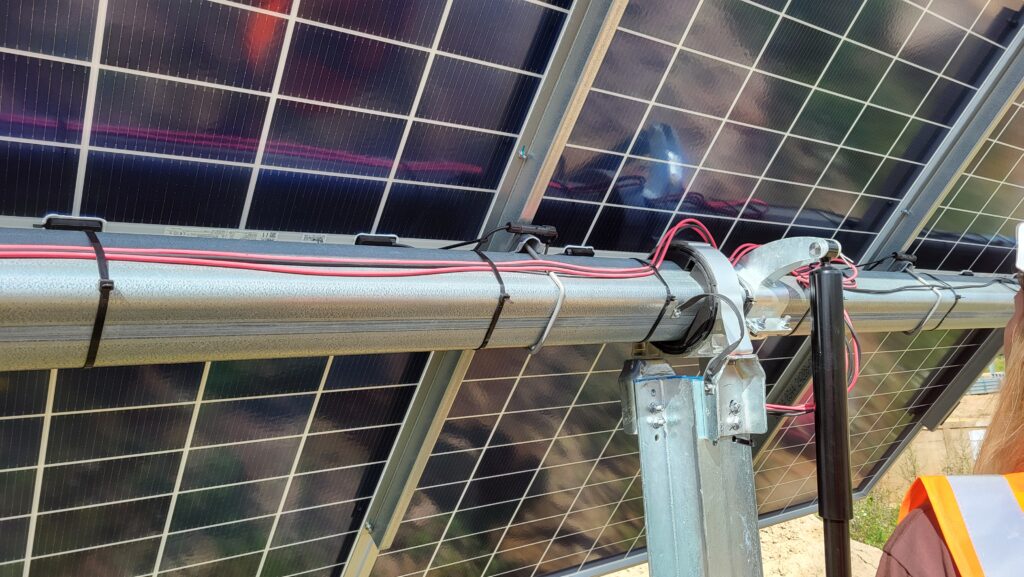
Spherical bearings
- Transformer Safety: An oil containment pit was designed beneath the main transformer, with capacity to hold its full oil volume and provide easy access for emergency removal.
- Future-Proofing: Road crossings were evaluated for durability, with provisions suggested for reinforcement to withstand unforeseen heavy vehicle loads.
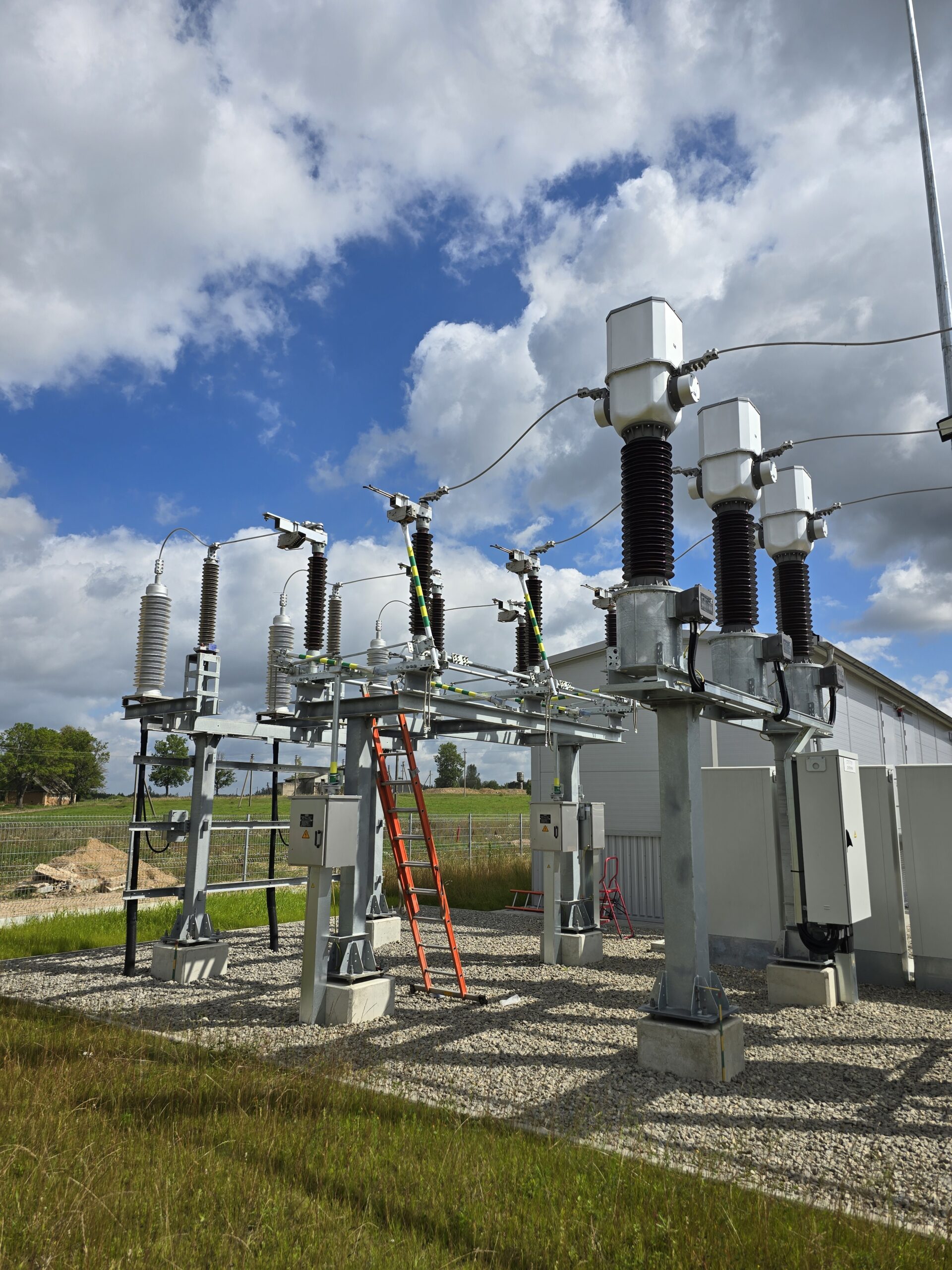
High voltage disconnect switches and surge arresters
Results
Detra Solar’s design and engineering input enabled the project to overcome significant challenges related to tracker cabling, piling on complex terrain, and high-voltage grid connection. These optimizations enhanced cost efficiency, ensured construction stability, and prepared the project for long-term operational performance.
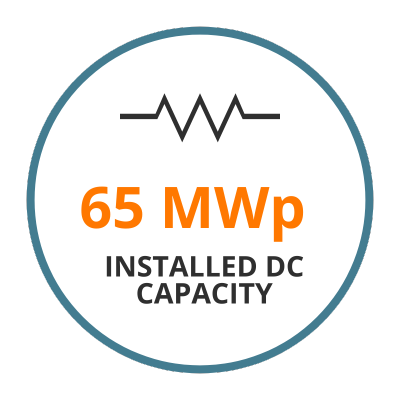


Conclusion
The Salcininkai Solar Park demonstrates Elektrum Lietuva’s commitment to advancing renewable energy in Lithuania with innovative technology and robust engineering solutions. Despite challenging terrain and complex grid connection requirements, the project was delivered with technical adaptability and optimized performance.
The 65 MWp solar park will contribute substantially to Lithuania’s renewable energy capacity, underscoring Elektrum Lietuva’s role as a leader in sustainable energy development and Detra Solar’s expertise in delivering high-quality design and consultancy services.





